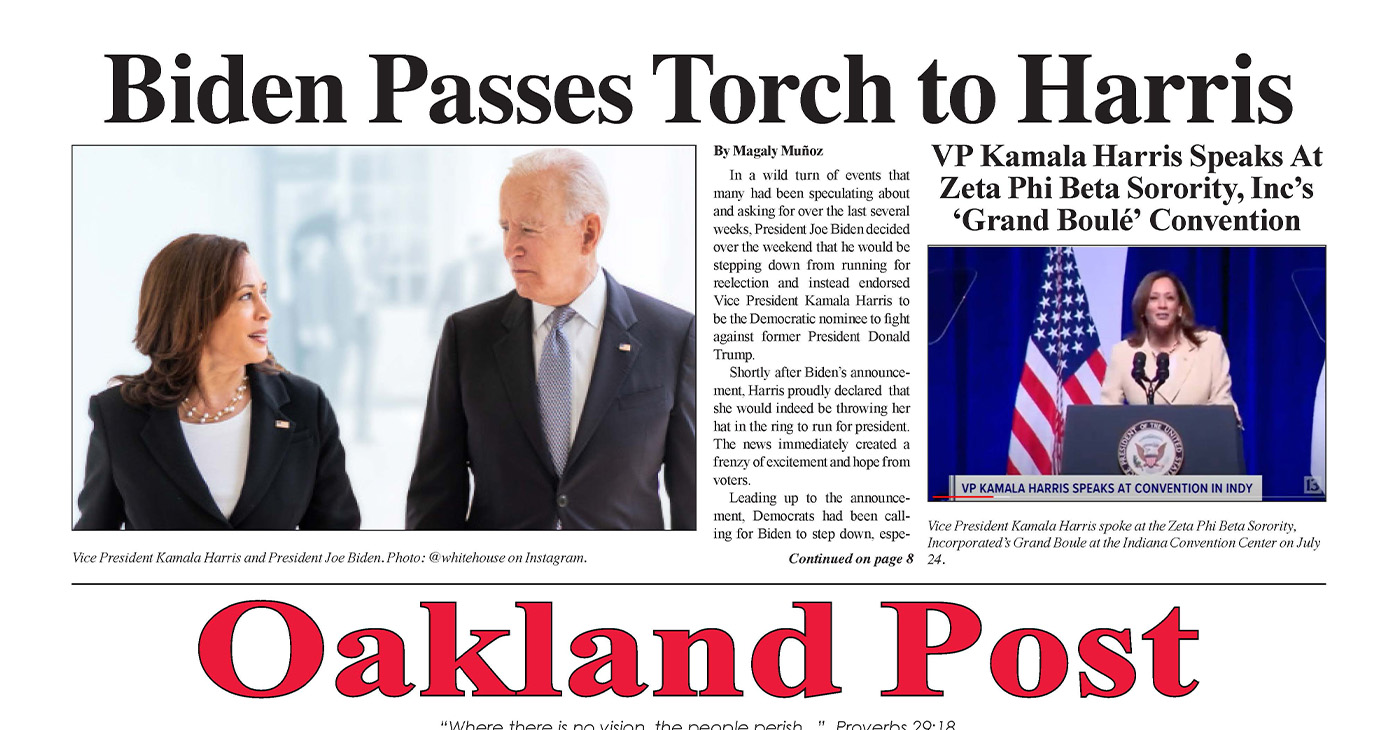Activism
Bay Area Officials Condemn Texas Abortion Restrictions, U.S. Supreme Court Ruling
Bay Area and state officials lambasted both the U.S. Supreme Court and the Texas state government after the high court declined to approve an emergency petition to stop a Texas law banning abortions six weeks or more after conception.

Bay Area and state officials lambasted both the U.S. Supreme Court and the Texas state government after the high court declined to approve an emergency petition to stop a Texas law banning abortions six weeks or more after conception.
Texas Gov. Greg Abbott signed the law, Senate Bill 8, in May, but it went into effect September 1 at 12:01 a.m. local time.
Late that night, the court issued a 5-4 ruling, with Chief Justice John Roberts joining the court’s three liberal justices in the minority, declining to rule on the petition, which was filed by Texas abortion clinics.
The court could still strike the law down in the coming days as unconstitutional, but abortion rights activists expressed skepticism that the court would do so after letting the law go into effect in the first place.
The law effectively overwrites the precedent set in 1973 by the court’s ruling in the case of Roe v. Wade by preventing pregnant people from seeking an abortion after their sixth week of pregnancy, a time when many people are not yet even aware that they are pregnant.
Rep. Barbara Lee, D-Oakland, called SB 8 “one of the most severe attacks on reproductive rights” in U.S. history.
“SB 8 is an appalling violation of human rights and reproductive rights, and will put the health of millions of people in jeopardy, especially for low-income people and people of color,” Lee said in a statement.
SB 8 does not make exemptions for pregnancies resulting from rape or incest and allows people to sue doctors, medical staff and even a patient’s ride to a medical clinic if they suspect the patient has had an abortion after six weeks.
Plaintiffs also are not required to show damages or have a connection to the patient to file a lawsuit under SB 8, and are entitled to $10,000 and their legal fees if a judge rules in their favor.
House Speaker Nancy Pelosi, D-San Francisco, said the law constructed a “vigilante bounty system” that could keep people from seeking reproductive health care of any kind.
“This provision is a cynical, backdoor attempt by partisan lawmakers to evade the Constitution and the law to destroy not only a woman’s right to health care but potentially any right or protection that partisan lawmakers target,” Pelosi said in a statement.
Vice President Kamala Harris echoed that sentiment.
“This decision is not the last word on Roe v. Wade, and we will not stand by and allow our nation to go back to the days of back-alley abortions,” Harris said in a statement. “We will not abide by cash incentives for virtual vigilantes and intimidation for patients.”
Jodi Hicks, the CEO and president of Planned Parenthood Affiliates of California, argued in a statement that the Supreme Court’s decision will inevitably lead to other states passing their own abortion restrictions.
Nearly a dozen states have already passed so-called “abortion trigger laws” that would fully outlaw the practice in the first and second trimesters as soon as Roe v. Wade is overturned.
“The inaction by the Supreme Court on a blatantly unconstitutional ban has taken away a crucial right to millions of people in Texas and without a doubt threatens their ability to make decisions about their body, their lives, and their futures,” Hicks said.
On September 2, Pelosi announced that the House of Representatives will formally take up legislation to codify abortion rights in federal law instead of relying on the court decision alone.
However, that bill, the Women’s Health Protection Act, is unlikely to find enough support in the U.S. Senate to reach President Joe Biden’s desk for a signature.
Biden said in a statement on September 1 that SB 8 “blatantly violates” the decision in Roe v. Wade and pledged to defend abortion rights across the country, but did not elaborate on what that might entail.
California Assemblywoman Buffy Wicks, D-Oakland, argued in a Twitter post that the purpose of SB 8 is clear: “to intimidate women (and) providers.”
“It cannot stand,” she said.
Activism
Oakland Post: Week of July 24 – 30, 2024
The printed Weekly Edition of the Oakland Post: Week of July 24 – 30, 2024

To enlarge your view of this issue, use the slider, magnifying glass icon or full page icon in the lower right corner of the browser window. ![]()
Activism
Oakland Post: Week of July 17 -23, 2024
The printed Weekly Edition of the Oakland Post: Week of July 17 -23, 2024

To enlarge your view of this issue, use the slider, magnifying glass icon or full page icon in the lower right corner of the browser window. ![]()
Activism
Community Celebrates Historic Oakland Billboard Agreements
We, the Oakland Billboard Economic Development Coalition, which includes Oakland’s six leading community health clinics, all ethnic chambers of commerce, and top community-based economic development organizations – celebrate the historic billboard agreements approved last year by the Oakland City Council. We have fought for this opportunity against the billboard monopoly, against Clear Channel, for five years. The agreements approved by Council set the bar for community benefits – nearly $70 Million over their lifetime, more than 23 times the total paid by all previous Clear Channel relocation agreements in Oakland combined.

Grand Jury Report Incorrect – Council & Community Benefit
We, the Oakland Billboard Economic Development Coalition, which includes Oakland’s six leading community health clinics, all ethnic chambers of commerce, and top community-based economic development organizations – celebrate the historic billboard agreements approved last year by the Oakland City Council. We have fought for this opportunity against the billboard monopoly, against Clear Channel, for five years. The agreements approved by Council set the bar for community benefits – nearly $70 Million over their lifetime, more than 23 times the total paid by all previous Clear Channel relocation agreements in Oakland combined.
Unfortunately, a recent flawed Grand Jury report got it wrong, so we feel compelled to correct the record:
- Regarding the claim that the decision was made hastily, the report itself belies that claim. The process was five years in the making, with two and a half years from the first City Council hearing to the final vote. Along the way, as the report describes, there were multiple Planning Commission hearings, public stakeholder outreach meetings, a Council Committee meeting, and then a vote by the full Council. Not only was this not hasty, it had far more scrutiny than any of the previous relocation agreements approved by the City with Clear Channel, all of which provide 1/23 of the benefits of the Becker/OFI agreements approved by the Council.
- More importantly, the agreements will actually bring millions to the City and community, nearly $70M to be exact, 23 times the previous Clear Channel relocation agreements combined. They certainly will not cost the city money, especially since nothing would have been on the table at all if our Coalition had not been fighting for it. Right before the decisive City Council Committee hearing, in the final weeks before the full Council vote, there was a hastily submitted last-minute “proposal” by Clear Channel that was debunked as based on non-legal and non-economically viable sites, and relying entirely on the endorsement of a consultant that boasts Clear Channel as their biggest client and whose decisions map to Clear Channel’s monopolistic interests all over the country. Some City staff believed these unrealistic numbers based on false premises, and, since they only interviewed City staff, the Grand Jury report reiterated this misinformation, but it was just part of Clear Channel’s tried and true monopolistic practices of seeking to derail agreements that actually set the new standard for billboard community benefits. Furthermore, our proposals are not mutually exclusive – if Clear Channel’s proposal was real, why had they not brought it forward previously? Why have they not brought it forward since? Because it was not a real proposal – it was nothing but smoke and mirrors, as the Clear Channel’s former Vice President stated publicly at Council.
Speaking on behalf of the community health clinics that are the primary beneficiaries of the billboard funding, La Clinica de la Raza CEO Jane Garcia, states: “In this case, the City Council did the right thing – listening to the community that fought for five years to create this opportunity that is offering the City and community more than twenty times what previous billboard relocation agreements have offered.”
Oakland Billboard Economic Development Coalition
| Native American Health Center | La Clínica de la Raza | West Oakland Health Center |
| Asian Health Services | Oakland LGBTQ Center | Roots Community Health Center |
| The Unity Council | Black Cultural Zone | Visit Oakland |
| Oakland African American Chamber of Commerce | Oakland Chinatown Chamber of Commerce | Oakland Vietnamese Chamber of Commerce |
| Oakland Latino Chamber of Commerce | Building Trades of Alameda County | (partial list) |
-

 Arts and Culture3 weeks ago
Arts and Culture3 weeks agoRooted in Tradition: The Intricate History of Black Hair Braiding
-

 Bay Area4 weeks ago
Bay Area4 weeks ago“I Will Not Be Bullied,” Says Oakland Mayor Sheng Thao
-

 Bay Area2 weeks ago
Bay Area2 weeks agoPG&E Increases Rates While Bay Area Households Are Struggling to Stay Afloat
-

 Business3 weeks ago
Business3 weeks agoGov Newsom: Raising Fast Food Minimum Wage to $20 Pays Off as Jobs Multiply in Industry
-

 Activism4 weeks ago
Activism4 weeks agoOpponents of Mayor Sheng Thao Are Calling on Her to Resign Following FBI Raid
-

 Bay Area2 weeks ago
Bay Area2 weeks agoJuneteenth Mass Shooting Suspect Charge with Multiple Counts of Felony Assault by Alameda County DA Pamela Price
-

 Community1 week ago
Community1 week agoHundreds Come to Jehovah’s Witnesses’ Assembly Hall for Three-Day Program of ‘Good News’ in Fremont
-

 Activism4 weeks ago
Activism4 weeks agoOakland Coliseum Sale to AASEG: A Model for Community Development and Inclusion

















































